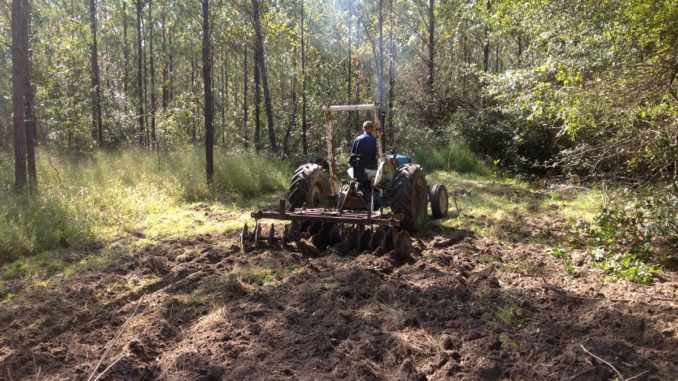
Disking improves wildlife habitat
On average, pine plantations comprise nearly 25 percent of the forested cover in the Carolinas. Since a quarter of those are in homogeneous stands with uniform rows, the rows left empty after thinning can be manipulated through disking or harrowing to create corridors of beneficial wildlife habitat. The best time to disk is right after a prescribed burn, when most of the debris has been converted to ash.
Pine plantations are planted systematically in rows and very close together to stimulate height growth early in life. After trees grow for 10 to 15 years, growth begins to taper off due to competition for sunlight, space and nutrients. The pines are then thinned by removing entire rows in a systematic fashion. Generally, plantations are thinned by removing every third, fourth or fifth row in sequence throughout the stand. Regardless, long rows approximately 10 feet wide are left vacant except for a line of short, rotting stumps.
T.J. Hallman the plantation manager at the Territories Saluda River Preserve in Chappell, S.C., participates in winter disking in his pines right after a controlled burn to slingshot early successional growth and potential forage opportunities.
“A controlled burn, plus winter disking, will drastically increase the number of annual plants, native grasses, forbs and the overall vegetative production on the property,” said Hallman. “We have 200 acres we disk up each year after a prescribed burn. It has been proven all across the Southeast to play a leading role in quality deer management.”
Hallman likes to begin his disking by the middle of February as a good rule of thumb. Disking will disturb the soil before they become suitable for seed-bank germination.
“In the first 8 to 12 inches of the soil, a rich seed bank exists from hundreds of years of seed deposition from plant regeneration,” he said.
Winter disking between the planted pine rows will create a wide variety of benefits for several species of game.
“Winter disking provides an outstanding native vegetation food source that also provides turkey brooding, deer bedding, cover for fawns, and unbelievable habitat to hunt bobwhite quail,” he said.




Be the first to comment